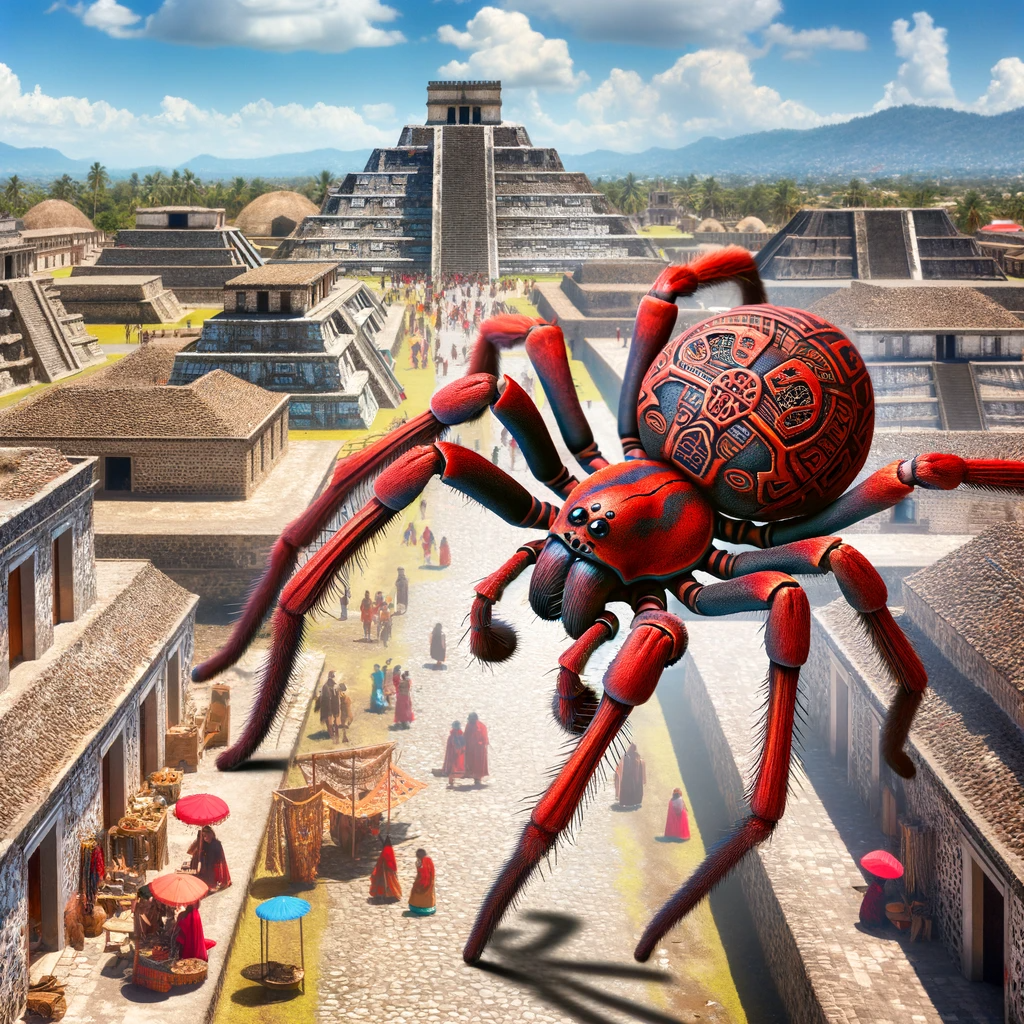
The Aztec deity Tlatlauhqui, often less known in the pantheon of Aztec mythology, presents a fascinating study due to its unique association with spiders. This relationship not only highlights the Aztecs’ deep understanding and reverence for nature but also reflects the complex symbolic framework within their religious beliefs.
Origins and Attributes
Tlatlauhqui, whose name can be translated to mean “The Red One,” is a deity whose origins and primary attributes are shrouded in mystery. The scarcity of direct references in surviving Aztec codices and the lack of detailed descriptions in post-Conquest Spanish records have left much to interpretation. However, what stands out is Tlatlauhqui’s depiction in various forms of art, notably in pottery and wall paintings, where the deity is often shown in close association with spiders.
Symbolism of the Spider
The spider, in Aztec mythology, held a significant place. It was seen as a creature of both creation and destruction, embodying qualities of patience, intelligence, and strategy. Spiders were also associated with weaving, a metaphor for the creation of life and the interconnectivity of the universe. This dual nature of the spider, as both a creator and a destroyer, is central to understanding Tlatlauhqui’s role in the Aztec pantheon.
Tlatlauhqui’s Role in Aztec Mythology
Tlatlauhqui is believed to have been a guardian deity, one who watched over the balance of the natural world. The deity’s connection with spiders suggests a role in overseeing the cyclical nature of life, death, and rebirth. This cyclical concept was fundamental to Aztec beliefs, as they viewed time and existence as an ever-revolving wheel.
In some interpretations, Tlatlauhqui is also seen as a deity of guidance, helping souls navigate the complexities of the afterlife, much like a spider expertly maneuvers its web. This aspect further strengthens the spider’s symbolic representation of wisdom and guidance in the face of life’s intricacies.
Cultural Impact
The reverence for Tlatlauhqui and the symbolic importance of the spider can be seen in various aspects of Aztec culture. From rituals and ceremonies to the everyday life of the Aztecs, the influence of these beliefs was profound. The weaving patterns in textiles, the designs in pottery, and the themes in folklore often reflected the intricate nature of a spider’s web, symbolizing the interconnectedness of all life.
Modern Interpretation
In contemporary times, the study of Tlatlauhqui and its association with spiders has gained interest among historians and anthropologists. This deity, while not as prominent as others like Quetzalcoatl or Huitzilopochtli, offers a unique insight into the lesser-explored aspects of Aztec mythology. It highlights how the Aztecs viewed and interacted with the natural world around them, seeing divinity in even the smallest of creatures.
Conclusion
Tlatlauhqui, with its intriguing connection to the spider, stands as a testament to the depth and complexity of Aztec religious thought. This deity embodies the intricate balance of creation and destruction, guiding and guarding, which were central to the Aztec understanding of the cosmos. As we delve deeper into their mythology, figures like Tlatlauhqui offer a richer, more nuanced understanding of this ancient civilization’s beliefs and their profound connection to the natural world.
